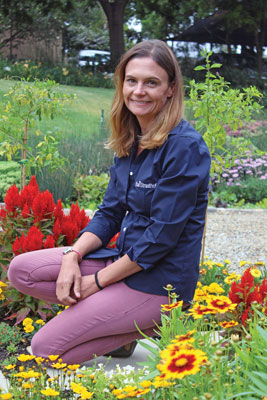5/1/2022
An Update From South Africa
Kathy Varney

(Editor’s note: Abe VanWingerden is taking some time off, so we thought we’d do something different and ask green industry business owners from around the world for their take on what’s going on in their specific markets. Enjoy!—JZ)
After a very intense and strict lockdown at the start of 2020, South Africans faced a rough road to recovery. With only essential services allowed, millions of plants were dumped in all parts of the chain. The problem was worsened when the government extended the lockdown into a time where production for spring should have started. We realized there would be an initial shortage of stock available for spring and worked on being as proactive as possible to ensure that there would at least be some color on the shelves.
Much like the rest of the world, we then saw an unprecedented demand for seeds and plants. While some sectors were struggling to survive, our industry was blessed. With all travel suspended, we found that the international community actually spoke to each other more than ever before. It was heartbreaking to hear, and tell of, the millions of plants dumped locally and abroad. We compared notes on all the disruptions in the supply chain, what different restrictions meant and what happened next. That part was the amazing part—what happened next! The one common theme emerging from everyone in our green industry around the world was that gardening exploded.
Who knows if it’s because people wanted to grow their own food, or suddenly had to stay home and realized how unattractive their surroundings were. Maybe people were just looking for new hobbies or had more time to spend on existing ones. Either way, exciting time!
Of course, a boom in a market comes with its own challenges—like when seed runs out in the world, it takes a while to make some more. When passenger flights are cancelled, some plants find it difficult to make their way over here. Throw in some changes in phytosanitary laws, and ships getting stuck in canals, and times were certainly never boring.
In terms of trends, we saw great growth in indoor plants and a trend towards small start-up cut flower growers. Veggies continued to increase and it was great to see that even traditional old bedding plants were given their time to shine.
Despite various supply challenges, 2021 continued to be a good year for the industry and everyone was still on a high. Towards the end of the year though, we noticed that things were starting to flatten out. Life had normalized and the leisure Rand (South African currency) was going back to restaurants, tourism and entertainment.
Now that we’re a few months in, 2022 has confirmed that the market isn’t growing like it was. The weather really hasn’t helped either! You may recall a few years ago when parts of our drought-stricken country nearly ran out of water completely. Almost all of our dams are now above capacity due to La Niña bringing us above average rainfall this past summer. The rain and floods have wreaked havoc with farmers and plant producers around the country. The higher rainfall also liked to coincide with weekends, leaving garden centers and retailers emptier than they’d like. We’re also South African—all this rain and cold has left us rather moody.
The ongoing war in Ukraine has resulted in increased fuel prices and has once again disrupted an already shaky supply chain. All raw material and shipping costs have gone up substantially over the past two years and we don’t believe the situation will improve any time soon. Doing business continues to be a challenge, but we do see hope for the future.
With full dams, and hopefully a drier season on the way, we believe spring (September here) could go well as people won’t be worried about water. With rising food costs, and possible concerns over food security, we expect the edible segment will continue to grow. The economic situation is always a concern, however, there’s always the possibility that people won’t be going on as many holidays, which usually means they spend more time decorating their homes and gardens.
So sure, it’s been a roller coaster and we aren’t planning for massive growth in the near future; however, we look at it this way: A flat market now is still way over where we were pre-pandemic, so we really can’t complain. GT
Kathy Varney is Marketing & Product Manager for Ball Straathof in Johannesburg, South Africa.